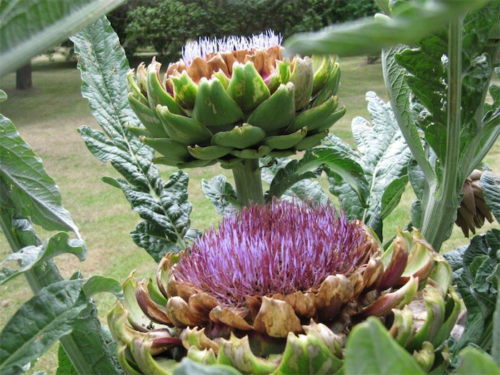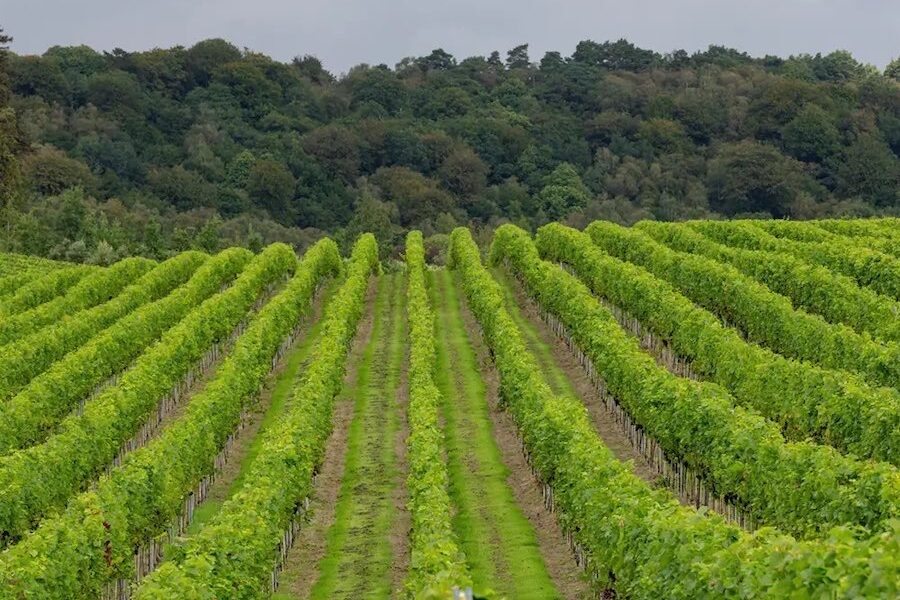
Gardening writer CEDRIC BRYANT is transfixed by the “majestic” globe artichoke, a very decorative plant that can be grown for its silver leaves and huge, thistle-like flowers or as a vegetable.
WITH globe artichoke (Cynara scolymus) the term “majestic” immediately comes to mind.
This is a very decorative plant that can be grown for its silver leaves and huge, thistle-like flowers or as a vegetable. It usually has a series of smaller flower buds below the terminal super-large flower bud. The sepal of the flower bud and the base of larger buds are edible.

With minimal care, the plants can crop for three to four years. Globe artichokes are usually raised from offsets or suckers, planted any time from now to late winter, and grow up to 90-centimetres tall with a similar spread. They were popular with the Romans as a vegetable, originating in the Mediterranean region.
UNRELATED, is the Jerusalem artichoke (Helianthus tuberosa). Despite the name, it has no relationship to the Middle East and originates in North America having been cultivated by the Indians for generations.
Related to sunflowers, it is a perennial that grows to more than 1.5 metres. It is grown from tubers, with their wrinkly surface being similar in appearance to ginger.
Between now and late winter is the time to plant with its tubers about 50 centimetres apart and 12 centimetres deep. They will be ready for harvesting in autumn as the leaves turn yellow. It is vitally important to harvest all tubers because they can spread through the garden and become a pest.

I FIRST saw what became one of my favourite deciduous shrubs, The Bride or Pearl Bush (Exochorda), many years ago in a garden in Crookwell.
In our garden, almost under the silver birches, it is possibly planted in the wrong spot. It doesn’t really have sufficient space to do it justice, although with pruning immediately after flowering it still presents a spectacular show in spring. Neglected plants respond well to heavy pruning.
While it seems to have gone out of fashion in recent years, possibly due to shrinking gardens, it deserves the space in a bigger garden for planting at this time. Native to China and central Asia it has received the prestigious RHS Award of Garden Merit.
IT’S time to sow poppies, the all-time old-fashioned plant for every garden. Yates has been selling poppy seeds for more than 100 years. The bright-red Flanders poppy is synonymous with Remembrance Day. Shirley mixed and Californian sunshine mix will brighten up any spring garden.
Sow thinly now on the surface of the soil and cover very lightly. The seed, like carrot seed, is very fine and it may be easier to mix with some fine sand when sowing.
Jottings…
- It’s hard to imagine we have already passed the shortest day of the year, the winter solstice, on June 22. It is now downhill all the way to the spring equinox of September 22-23. Despite predictions of a dry winter, regular if small showers of rain have kept the garden looking great.
- Apples and pears can be pruned at this time, cutting out dead, diseased or damaged boughs plus crossing-over branches.
- The full range of fruit trees is in garden centres now. Ask about cross pollination and whether you need more than one tree.
- Plant summer-flowering bulbs such as liliums now. If bulbs are for sale in garden centres, now it is time to plant them.
Who can be trusted?
In a world of spin and confusion, there’s never been a more important time to support independent journalism in Canberra.
If you trust our work online and want to enforce the power of independent voices, I invite you to make a small contribution.
Every dollar of support is invested back into our journalism to help keep citynews.com.au strong and free.
Thank you,
Ian Meikle, editor




Leave a Reply